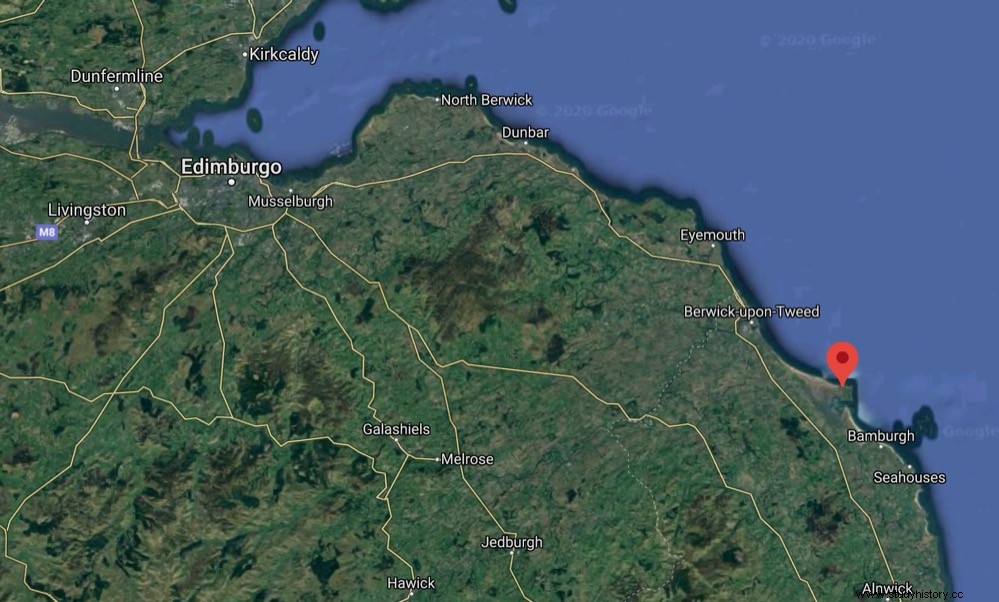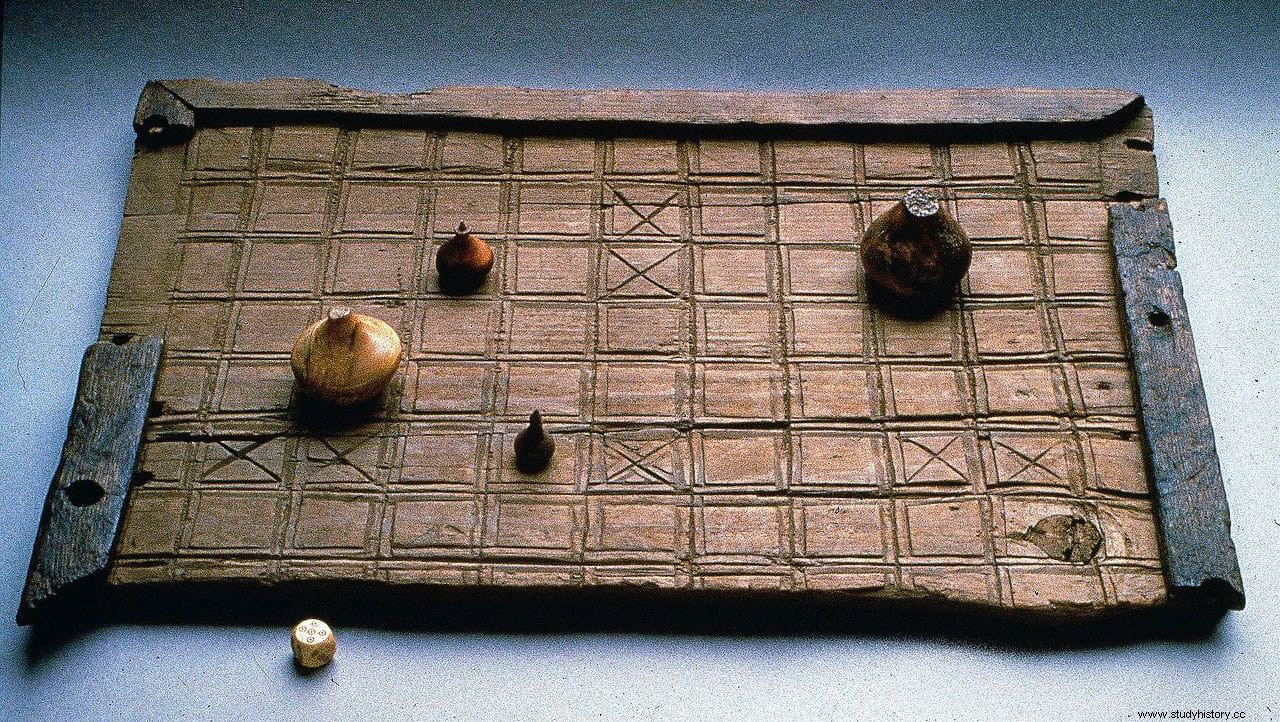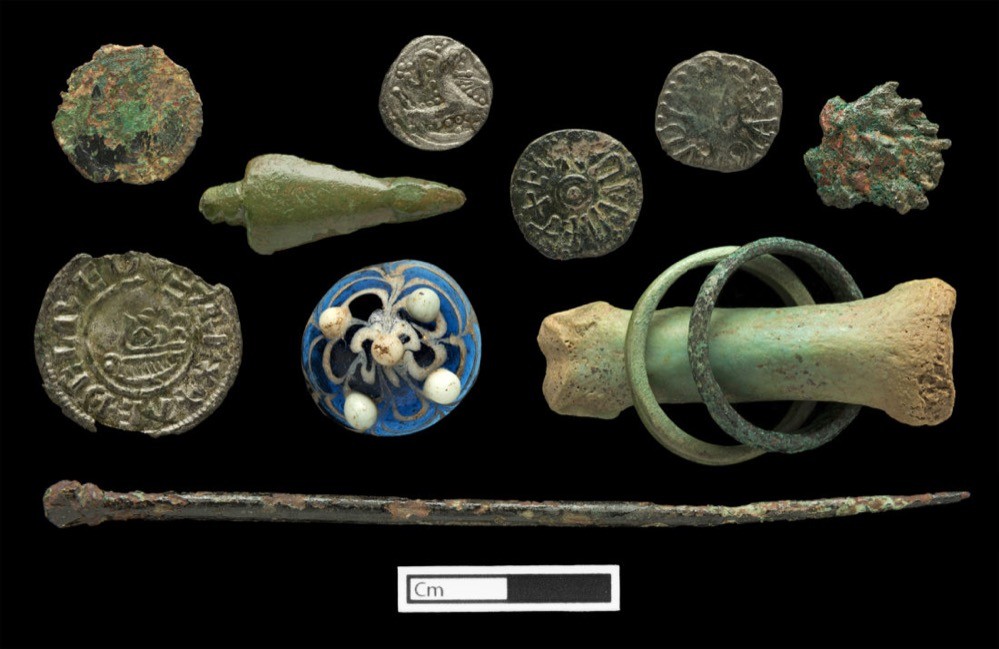A rare piece of glass was discovered during an archaeological dig at Lindisfarne – the small Northumbrian island whose medieval monastery was raided by Vikings in 793 AD, heralding the start of the Viking Age in Britain.
The piece was discovered in September 2019 during a community archaeological dig led by DigVentures and Durham University, which has uncovered part of the iconic monastery.
Made of brilliant blue glass with lush white swirls, it is topped with a ring of five white balls, meaning it was likely a king piece in a board game.

Dated between AD 700 and 900, archaeologists believe it does indeed come from a set used to play Hnefatafl a modality of the tafl , the family of games that were derived from the Roman war game Ludus Latrunculorum , and was played in Great Britain, Denmark, Iceland, Ireland, Norway, and Sweden before the advent of chess in the 11th and 12th centuries. Precisely a board of Ludus Latrunculorum it was found at the Vindolanda site in May 2019.
Other wooden or bone tafl pieces have been found in elite burials in Anglo-Saxon England, but only one other glass tafl piece has been found in the British Isles, at Dundurn, Scotland, making this Lindisfarne piece the second to be discovered.

The next closest examples were found near Dublin, Ireland, in Dorstadt, Germany, and in a 12th-century burial at Birka, Sweden.
A lot of people will be familiar with the Viking versions of the game, and I'm sure a lot of people will wonder if this game piece was dropped by a Viking during the attack on Lindisfarne, but we think it actually belonged to a version of the game. game that was played by the elites of northern Britain before the Vikings set foot here said Lisa Westcott Wilkins, CEO of DigVentures.
The Romans were very fond of gifting game pieces to 'barbarian' princes, and as the game spread outside the Roman empire, different societies developed their own variations of the rules, including northern Britain. /em>
In fact, we believe the piece was probably originally buried with a member of the Northumbrian elite, whose grave was later disturbed.
It is surprising to think that when the Vikings arrived here they could, in theory, sit down with the monks of Lindisfarne to play a game that would have been familiar to both cultures, although they would almost certainly have argued over the rules of the game , Westcott Wilkins continued.
Although there were many different versions, all games follow more or less the same principle of defending a king against attackers.
It is rare to find a glass tafl game piece like this in such mint condition. They are as rare as hen's teeth said Mark Hall, a leading specialist in early medieval and Roman games, and Collections Officer at the Perth Museum and Art Gallery, who inspected the piece when it was found.
Now in its fourth season, the excavation has revealed part of a burial ground and workshop associated with the monastery, both dating from 700 to 1000 AD. when activity on the island was at its height.
This is a truly wonderful discovery, giving us a very special insight into life in the monastery at that time said Dr. David Petts, Senior Lecturer in the Archeology of Northern Britain at Durham University, who co-leads the dig with DigVentures.
It is similar to a number of other examples found in settlements and trading sites around the edge of the North Sea, and shows us not only that there were people in Lindisfarne who had free time, but that they were well connected Petts said.
Lindisfarne would have been a very busy place back then. Thousands of people would have come on pilgrimage seeking miracles and cures, but the monastery also had strong royal connections:it stands directly opposite Bamburgh Castle, which was the seat of Norwegian power. This meant that it was also a place of refuge for kings, and was regularly visited by elites, nobles and high-ranking clergy.
We know that at least one king retired to the island to end his life as a monk, but before he joined the community he changed the rules to ensure monks could drink wine.

Although people tend to think of Lindisfarne today as a fairly remote place, back then it was far from isolated. It was a nexus of cultural connections, with strong links to other parts of Britain, continental Europe and even beyond , Petts said.
This year's investigation also uncovered two copper rings, a copper pin, a small bronze buckle, and evidence that the workshop might be related to metallurgy, for which the monastery was famous.
Sources
DigVentures.
